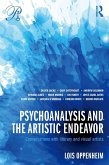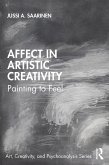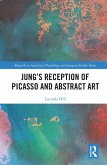Pailthorpe's theoretical understanding of the psyche informed her approach to art, setting her work apart from other Surrealist artists by unifying artistic, scientific and therapeutic aims. Pailthorpe considered Surrealism to be a method of investigation into unconscious mental life, and believed that it was essential that the repressed part of our minds should find expression. By bringing her artistic and theoretical work to light, Montanaro and Stefana reassert Pailthorpe's significance to the histories of both psychoanalysis and Surrealism, rendering the cross-disciplinary relevance of her work accessible to a contemporary audience.
This book will prove to be a rich resource for scholars and students interested in psychoanalysis and art history, and provides an invaluable case study for the continuing significance of visual artistic practices to clinical work.
Dieser Download kann aus rechtlichen Gründen nur mit Rechnungsadresse in A, B, BG, CY, CZ, D, DK, EW, E, FIN, F, GR, HR, H, IRL, I, LT, L, LR, M, NL, PL, P, R, S, SLO, SK ausgeliefert werden.









